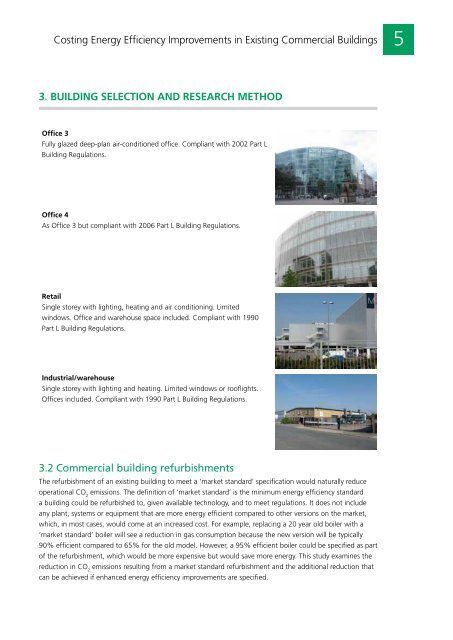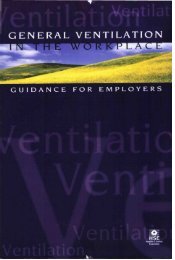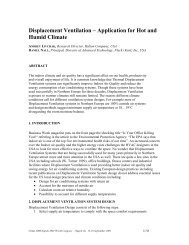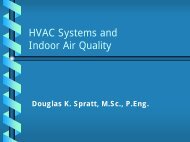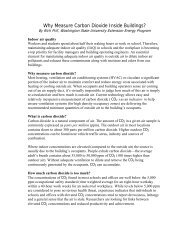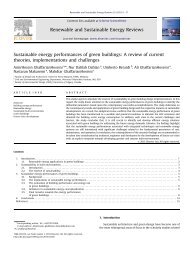Costing Energy Efficiency Improvements in Existing Commercial Buildings
Costing Energy Efficiency Improvements in Existing Commercial Buildings
Costing Energy Efficiency Improvements in Existing Commercial Buildings
Create successful ePaper yourself
Turn your PDF publications into a flip-book with our unique Google optimized e-Paper software.
<strong>Cost<strong>in</strong>g</strong> <strong>Energy</strong> <strong>Efficiency</strong> <strong>Improvements</strong> <strong>in</strong> Exist<strong>in</strong>g <strong>Commercial</strong> Build<strong>in</strong>gs53. Build<strong>in</strong>g selection and research methodOffice 3Fully glazed deep-plan air-conditioned office. Compliant with 2002 Part LBuild<strong>in</strong>g Regulations.Office 4As Office 3 but compliant with 2006 Part L Build<strong>in</strong>g Regulations.RetailS<strong>in</strong>gle storey with light<strong>in</strong>g, heat<strong>in</strong>g and air condition<strong>in</strong>g. Limitedw<strong>in</strong>dows. Office and warehouse space <strong>in</strong>cluded. Compliant with 1990Part L Build<strong>in</strong>g Regulations.Industrial/warehouseS<strong>in</strong>gle storey with light<strong>in</strong>g and heat<strong>in</strong>g. Limited w<strong>in</strong>dows or rooflights.Offices <strong>in</strong>cluded. Compliant with 1990 Part L Build<strong>in</strong>g Regulations.3.2 <strong>Commercial</strong> build<strong>in</strong>g refurbishmentsThe refurbishment of an exist<strong>in</strong>g build<strong>in</strong>g to meet a ‘market standard’ specification would naturally reduceoperational CO 2emissions. The def<strong>in</strong>ition of ‘market standard’ is the m<strong>in</strong>imum energy efficiency standarda build<strong>in</strong>g could be refurbished to, given available technology, and to meet regulations. It does not <strong>in</strong>cludeany plant, systems or equipment that are more energy efficient compared to other versions on the market,which, <strong>in</strong> most cases, would come at an <strong>in</strong>creased cost. For example, replac<strong>in</strong>g a 20 year old boiler with a‘market standard’ boiler will see a reduction <strong>in</strong> gas consumption because the new version will be typically90% efficient compared to 65% for the old model. However, a 95% efficient boiler could be specified as partof the refurbishment, which would be more expensive but would save more energy. This study exam<strong>in</strong>es thereduction <strong>in</strong> CO 2emissions result<strong>in</strong>g from a market standard refurbishment and the additional reduction thatcan be achieved if enhanced energy efficiency improvements are specified.


